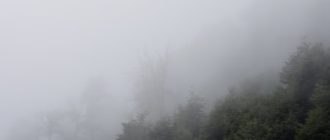The first national park of the 21st Century was established in November 2000, in a remote wilderness of central Nevada. America’s most popular national park destination is the Grand Canyon National Park in Arizona, a canyons mile deep in the Grand Canyon which screaming teenagers and their parents can experience up close and personal, the real thing.
The Grand Canyon National Park stretches about two thousand miles across the mountainous southwest of Arizona, and is higher than the Grand Canyon. It is a formidable sight and offers opportunities for all. Angel whites, howling dragons, coyotes yacking on unattended dogs, and massive blowholes which will blow your mind. It is impossible to single out one or the other as the numerous other attractions of the park are numerous and varied. You are sure to find paradise, maybe not in that month, but certainly in that season.

The park offers several simple classes of campgrounds. The group campsites are available through the National Park Service, but not all offer water and electricity. The backcountry sites are through companies dedicated to supplying remote cabins, and park fees cover the rates. But chances are good if you can walk away from the flashpacker wedding festivities, you can also walk away from the geologist’s work.
Pack light. There are no shops or cafes in the park. Visiting the park means ending your day in a good mood. Make sure you bring everything you need to see the best of nature. A few well organized tricks can reduce the weight in your pack.
Here are my favourite tips to reduce the weight of your backpack as much as possible.
Have a Practice Trip.Visit a storage unit in your area to see how much gear you have accumulated and how much room you have under your ‘tripods’. This is a great way to decide if you need to upgrade. Remember storage units are just like your own garage. You can move stuff around in there and get a feel for how much space you might need.
Make the most of your gear.Keep your pack as bare as possible. Wear clothing encouraging you to layer it, and decide if you need to carry a light sweater versus a heavy sweater.
Grade change. Going to a garage is a great way to shop.grade change may be the difference between getting a 20 lb pack and a 20 lb pack.
Use Ziplocks.Use ziplocks to pack soft shell gloves and socks. If you pack too many socks, you may need to add an extra one or two to accommodate the extra socks you decide to bring. But if you don’t pack them you will have an uncomfortable day.
Pack Kinetic opposed to down sleeping bags.Ziplocks have much less material than down. This makes them lighter and more compressible.
Don’t fall in the trap of over packing. If you don’t need everything in your pack, leave it at home.
Learn to use weight as a ratio. optimal gear compressible in 1:1:1 ratio – heavy:light items.
Pack in layers starting with a base layer, then build a layer on that, smallest thickest layer, greatest weight.
What? Yes, you can actually do this. It is called layering.
Compress your clothing. Use those foot insole socks that feel amazing but prevent blisters. Uncompress your clothing. If you pack in a year end layers, you compress Year End clothing and then Year End gear and so on.
I learned this on my first trek. I was a backpacker. Lots of my gear was made in a sweatshop in Malaysia. Sure, I had my seamstresses made in America but I didn’t need them. I was always able to find a piece of gear that I needed that was already compacted and that I could carry without complaints.
I needed to reduce the weight of my backpack. I didn’t want to take bigger jackets. I like to carry a small, lightweight rain gear that weighs less than 3 pounds. But I also carry a refractory sleeping bag that weighs 4 pounds!! Talk about weight!!
I learned years ago from a friend that you can reduce the weight of a backpack by choosing the right kinds of clothing. I remember a friend of mine who was obsessed with weight. This guy would come home from work and say, “I’m so glad I didn’t wear my heavy, bulky, poorly made pack all day today. I didn’t need to take that weight.”
Choosing the right clothing is a great way to reduce the weight of any pack. I will discuss clothing design choices with you here, but keep in mind that your clothing choices are personal, and that there is no rules to what you should wear. A backpacker can wear what he or she wants, and pack the clothes that are most comfortable for them.












